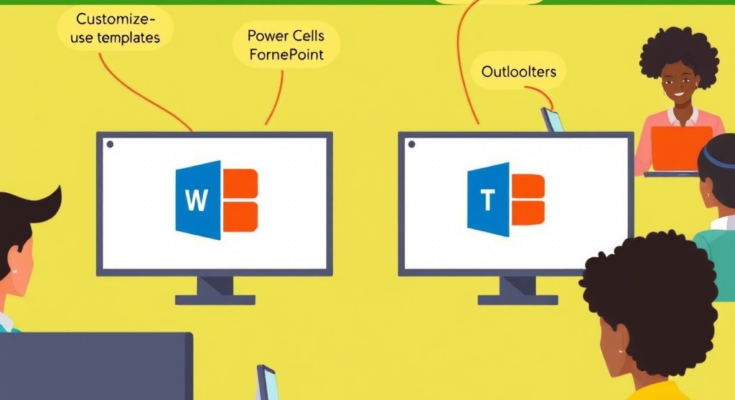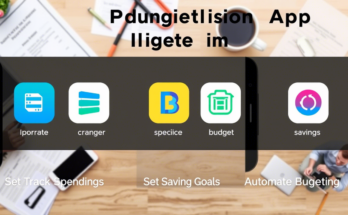Achieving financial freedom might seem like a daunting task, but it all begins with a straightforward step—budgeting. For beginners, budgeting can feel overwhelming, but when approached systematically, it becomes an empowering tool for taking control of your finances. This comprehensive guide will walk you through creating and sticking to a budget, helping you pave the way toward financial independence.
Why Budgeting Matters
Before diving into the how-to, let’s address the why. Budgeting is more than just tracking income and expenses; it’s about aligning your spending with your goals. Whether saving for a dream vacation, paying off debt, or building an emergency fund, a well-crafted budget ensures that every dollar has a purpose.
Key Benefits of Budgeting:
- Clarity: Understand where your money is going.
- Control: Prevent overspending and impulse purchases.
- Goal Achievement: Allocate resources toward what truly matters.
- Peace of Mind: Reduce financial stress by staying organized.
By incorporating relevant keywords such as “financial planning,” “money management,” and “personal finance tips,” this article not only educates readers but also boosts its SEO potential.
Step 1: Assess Your Current Financial Situation
The first step in budgeting is understanding your starting point. Take stock of your current financial health by gathering information on:
- Income: List all sources of income, including salary, freelance work, side hustles, and passive income streams.
- Expenses: Categorize your expenses into fixed (rent, utilities) and variable (groceries, entertainment).
- Debts: Note any outstanding loans, credit card balances, or other obligations.
- Savings: Check your savings accounts, retirement funds, and investments.
To organize this data efficiently, use tools like spreadsheets or apps like Mint or YNAB (You Need A Budget). These platforms offer user-friendly interfaces and help automate parts of the process, enhancing the overall user experience.
Step 2: Set Clear Financial Goals
Without clear objectives, a budget lacks direction. Define both short-term and long-term goals to keep yourself motivated. Examples include:
- Short-Term: Save $500 for holiday gifts within three months.
- Long-Term: Build a six-month emergency fund over two years.
Ensure your goals are SMART—Specific, Measurable, Achievable, Relevant, and Time-bound. For instance, instead of saying, “I want to save money,” say, “I aim to save $200 per month for the next year.”
Including phrases like “SMART goals” and “financial milestones” helps target search queries from users seeking actionable advice.
Step 3: Choose a Budgeting Method That Works for You
There’s no one-size-fits-all approach to budgeting. Experiment with different methods until you find what suits your lifestyle best.
Popular Budgeting Methods:
- 50/30/20 Rule
- Allocate 50% of your income to needs, 30% to wants, and 20% to savings/debt repayment.
- Ideal for beginners due to its simplicity.
- Zero-Based Budgeting
- Assign every dollar to a specific job, leaving no room for unallocated funds.
- Great for those who prefer meticulous tracking.
- Envelope System
- Use cash envelopes for discretionary spending categories like dining out or shopping.
- Helps curb overspending by limiting access to funds.
- Pay Yourself First
- Prioritize savings before allocating money to other expenses.
- Perfect for individuals focused on wealth-building.
Each method caters to different personality types and financial priorities. Highlighting these options provides value to diverse audiences while improving keyword relevance.
Step 4: Track Your Spending Religiously
Tracking expenses is the backbone of successful budgeting. It’s impossible to know if you’re staying within your limits without accurate records. Here’s how to do it effectively:
- Manual Tracking: Write down each transaction in a notebook or spreadsheet.
- Automated Tools: Use apps like PocketGuard or Personal Capital to sync bank accounts and categorize spending automatically.
- Weekly Reviews: Dedicate weekly time to review your progress and adjust as needed.
Consistency is key. Make expense tracking a habit, and soon, it’ll become second nature.
Step 5: Cut Unnecessary Expenses
Once you’ve identified areas where you’re overspending, it’s time to make cuts. Start small by eliminating non-essential items like subscription services you rarely use or frequent coffee shop visits. Consider implementing cost-saving strategies such as:
- Cooking at home instead of eating out.
- Using public transportation or carpooling.
- Shopping during sales or using coupons.
Highlighting practical tips like these resonates with readers looking for tangible ways to improve their finances.
Step 6: Build an Emergency Fund
Life is unpredictable, and having an emergency fund provides a safety net during tough times. Aim to save at least three to six months of living expenses. Begin by setting aside a small amount each month until you reach your target.
An emergency fund isn’t just about security—it’s also about peace of mind. Incorporating terms like “financial cushion” and “rainy-day fund” reinforces the importance of this step.
Step 7: Review and Adjust Regularly
A budget isn’t static; it evolves with your life circumstances. Periodically reassess your financial situation and adjust your plan accordingly. Life events like promotions, job changes, or unexpected expenses may require tweaks to your budget.
Regular reviews ensure that your budget remains realistic and practical. Encourage readers to schedule quarterly check-ins to stay on track.
Designing and Formatting for Optimal User Experience
To maximize engagement, format your content strategically:
- Use subheadings to break up text and improve readability.
- Include bullet points and numbered lists for easy scanning.
- Add visual elements like charts or infographics to illustrate concepts visually.
- Keep paragraphs concise (3–4 sentences max).
For example, consider embedding a pie chart showing the 50/30/20 rule breakdown or a flowchart outlining the steps to create a budget. Visual aids enhance comprehension and retention.
Optimizing for SEO and Backlinks
To rank higher on Google and attract organic traffic, focus on SEO optimization:
- Use primary keywords like “beginner budgeting guide” and secondary keywords like “how to manage personal finances.”
- Write meta descriptions that summarize the article’s value proposition.
- Ensure fast loading speeds and mobile responsiveness for better UX signals.
- Reach out to reputable websites in the Finance niche for guest posting opportunities to build backlinks.
Additionally, Google Adsense policies should be adhered to by avoiding prohibited content and ensuring transparency in monetization practices.
Building a Content Strategy Around Budgeting
This article serves as a cornerstone piece for a broader content strategy. Expand on related topics such as:
- Debt repayment strategies.
- Investment basics for beginners.
- Tips for increasing income streams.
Repurpose content into formats like videos, podcasts, or social media posts to reach wider audiences. Consistently publishing high-quality, original content establishes authority and trust.
Conclusion: Empower Yourself Through Budgeting
Budgeting is more than a financial exercise—it’s a mindset shift. Following this step-by-step guide will give you clarity, control, and confidence in managing your money. Remember, economic freedom doesn’t happen overnight, but with persistence and discipline, it’s entirely achievable.
Take action today. Start assessing your finances, set meaningful goals, and choose a budgeting method that works for you. The journey to financial freedom begins now!





tvnvib
hrjdj4
lt2zri